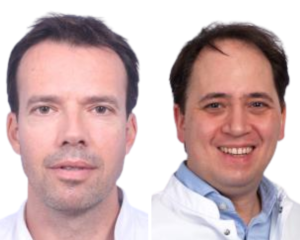This course will give you a complete overview of the Coronary Artery Bypass Grafting - CABG technique. You will find a step-by-step run-through on the procedure and get a good overview of the quality requirements of this technique. This course provides a theoretical preparation for working with the CABG technique.


When you have a narrowed or blocked artery in your coronary circulation, Coronary Artery Bypass Grafting (CABG) is one of the treatment options available. CABG aims to redirect blood around a (partially) blocked section of an artery in the coronary circulation. This is achieved by bypassing the blocked section with a healthy blood vessel from elsewhere in the body (typically the arm, leg or chest). this multistep surgical procedure is invasive, but effectively relieves complaints of angina, improves exercise capacity and overall quality of life.
For whom
At the end of this course, you will be able to:
Module 1: Introduction to CABG
In this module, we will discuss what you will learn during the course, providing you with a course outline and practical information on the course. After this, cardio-thoracic surgeons Dr. Bart van Putte and Dr. Patrick Klein briefly explains what CABG is and why they use it. Finally, you get a chance to test your current knowledge on the subject in a short pre-test.
Module 2: CABG procedure
In this module, you will follow the entire CABG procedure. You will be introduced to a patient who was scheduled for semi-urgent CABG. Then you will watch a discussion with Dr. Bart van Putte and Dr. Patrick Klein about the choice for CABG, placing stents or giving medication. Before the start of the procedure, you will also be prompted to think about the choice for a donor vessel: what are the differences between arterial and vein grafting? Then you will learn about the different steps of the CABG procedure and watch the operation being performed on a patient.
Module 3: The future of CABG
In this final module, we will close up the course. You will think about the future of bypass surgery and get the chance to put your knowledge to the test. If you pass the final exam, you can download your course certificate and finish the course.
You will receive a certificate upon completion of all required learning activities. This includes watching the videos and answering the practice questions. In addition, you have to get a score of >70% on the final exam in Module 3: Course closure. All other questions and assignments are just for practice.
Accreditation NVVC/NVT 1 point
Access to the course in the online learning environment will be granted for up to 1 year after enrollment into the course.
The authors of this course are Dr. Bart van Putte and Dr. Patrick Klein. Both Bart and Patrick have over 10 years of experience as cardiothoracic surgeon, and are currently working at the St. Antonius Hospital and Amsterdam UMC in The Netherlands. They are specialized in the field of minimal invasive surgery and have been involved in the development and research of the Elana Heart Bypass System.
We believe that future-proof research is essential for good care. That is why we combine innovative medical knowledge with didactics. Thanks to our extensive network and proven didactic methods, we make Life Sciences and Health professionals better than yesterday.